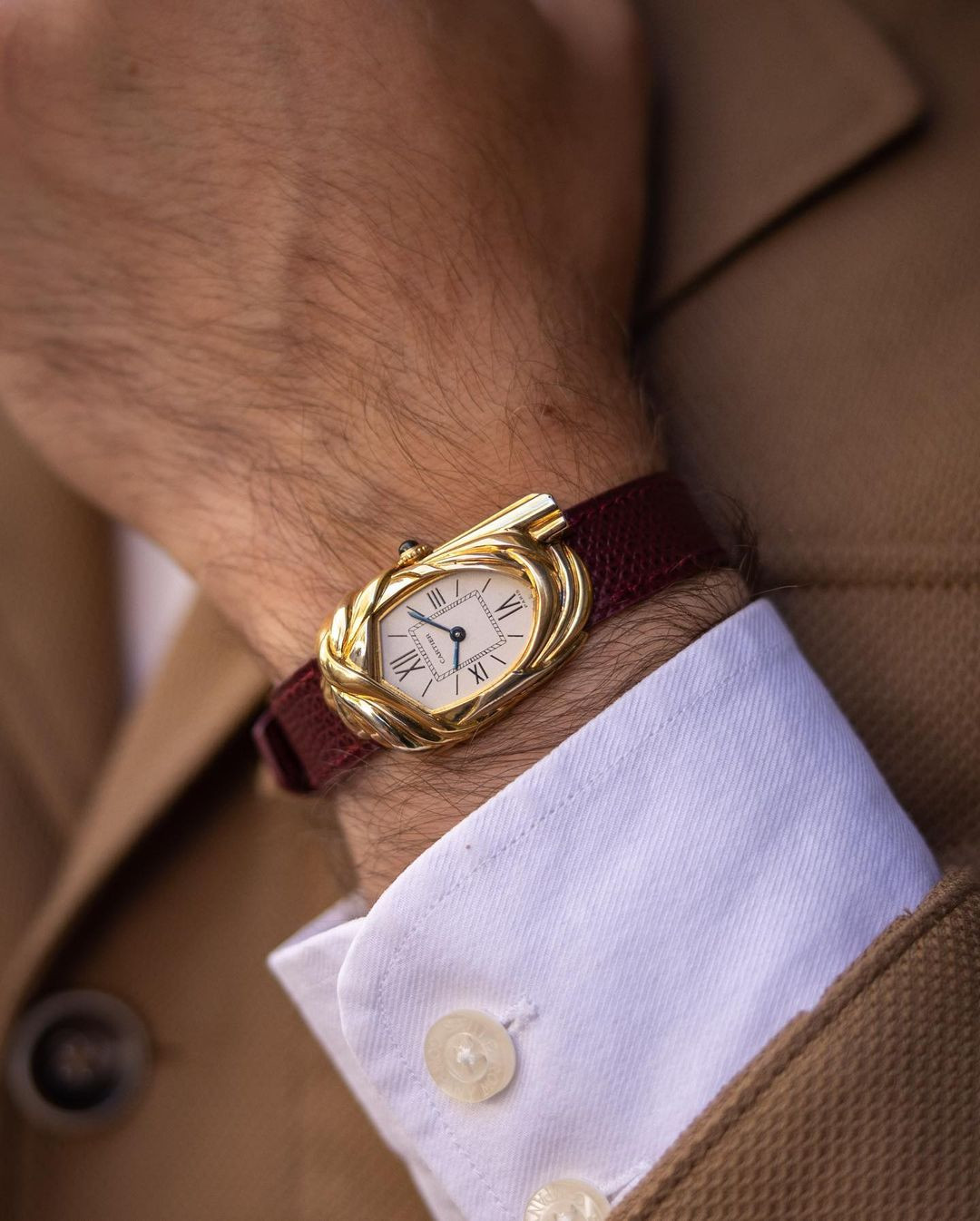In the world of haute horlogerie, where tradition reigns and most brands cling to the safety of circular dials and conservative silhouettes, Cartier has always danced to its own beat. It doesn’t just tell time—it shapes it, quite literally. Through over a century of bold watchmaking, Cartier has established itself not just as a jeweller of kings, but as a true design pioneer, known for breaking the mould with form and imagination.
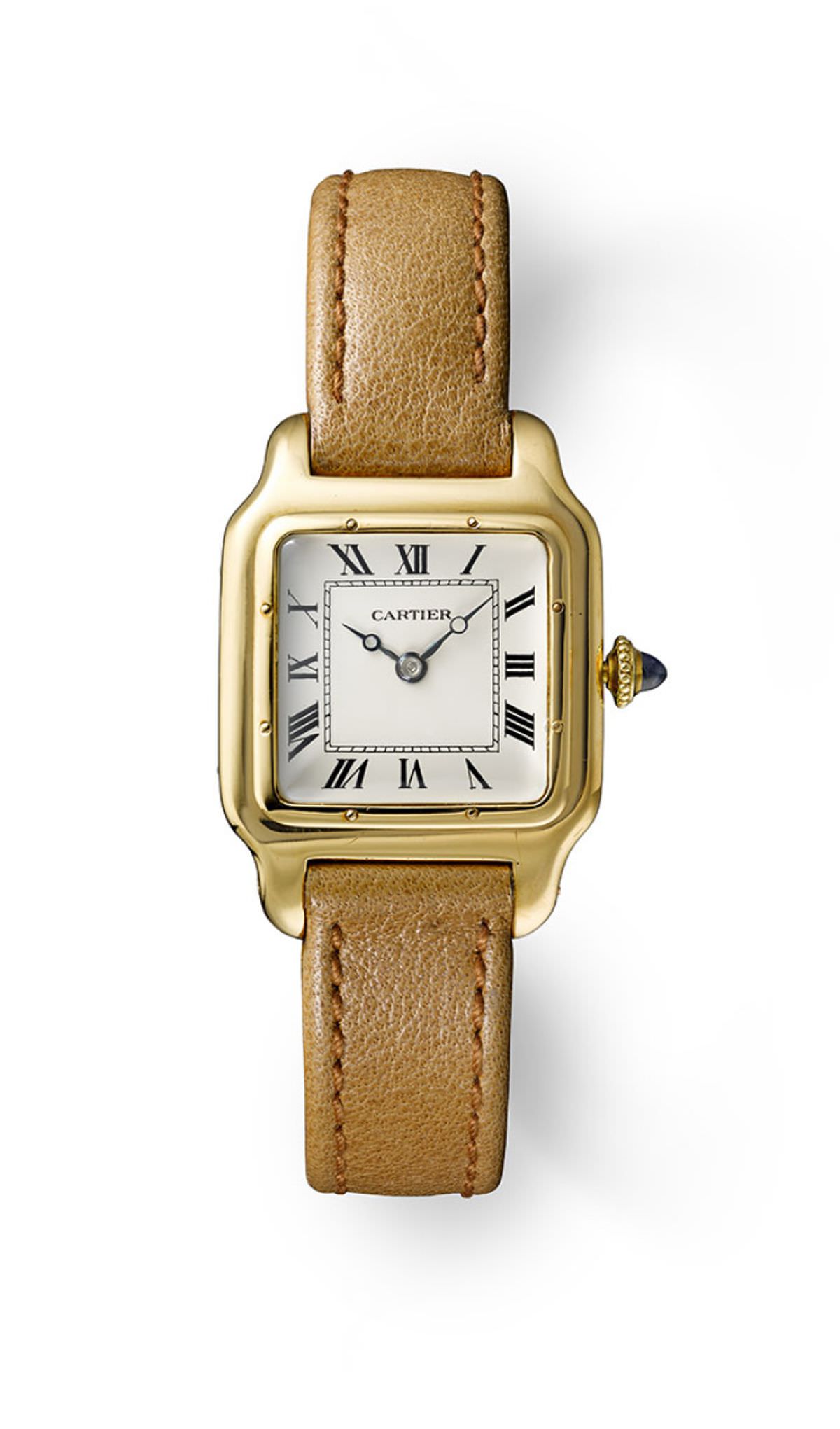 Cartier Santos
Cartier Santos It all began in 1904 with the Santos—a watch born out of necessity but destined to be revolutionary. At a time when round pocket watches were the standard, Cartier’s square-dial wristwatch for aviator Alberto Santos-Dumont was a radical innovation. The Santos became the first pilot’s watch and one of the earliest purpose-built wristwatches for men, setting the tone for Cartier’s future as a disruptor. Designed by Louis Cartier himself, for his friend, Brazilian aviator Alberto Santos-Dumont, the original Santos was offered in platinum or yellow gold, a small case measuring from about 24.8mm X 34.8mm. The mechanical movement of the watch was supplied by EWC (European Watch & Clock Co./Jaeger-LeCoultre).
 Cartier Tortue
Cartier Tortue Just eight years later, in 1912, the Tortue (French for “turtle”) arrived. Its rounded, shell-like silhouette, designed by Louis Cartier, housed Cartier’s first chronograph, adding a touch of biomorphic elegance to the wrist. Typically platinum or gold, the watch featured sword shaped hands with the early models measuring 26mm x 19mm and featuring mechanical movement supplied by EWC. It wasn’t just different—it was sophisticated, and marked Cartier’s embrace of organic forms in an era of rigid design.
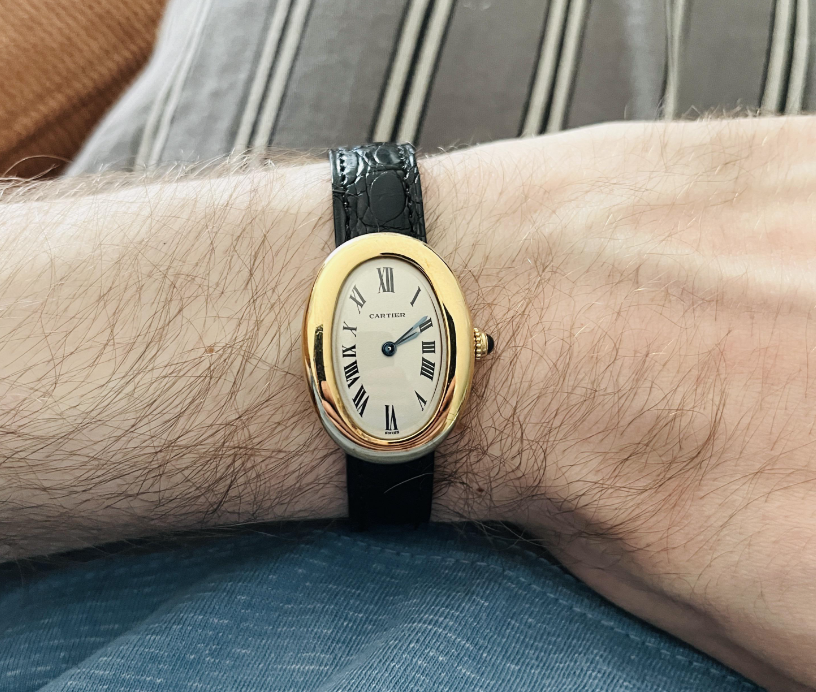 Cartier Baignoire
Cartier Baignoire
In the same year, the Baignoire (French for “bathtub”) was also introduced in an elliptical case which was avant-garde for the time, designed for women with a focus on elegance and sensuality. However, the Baignoire became iconic in the 1950s-60s, often worn by French fashion icons like Jeanne Moreau. Powered by a quartz movement, it was perfect for everyday use. The modern version of the watches typically come in 24mm to 31mm.
 Cartier Tank
Cartier Tank Then came perhaps Cartier’s most iconic watch, the Tank, designed in 1917 (launched in 1919). It was created by Louis Cartier with the thought of creating a masculine watch than any watch available at the time. With its rectangular shape inspired by the aerial view of a WWI military tank, the Renault FT-17, it combined architectural discipline with artful restraint. Produced with a mechanical movement, the size of the original Tank remains unknown, though modern iterations like the Tank Must, measure 41mm x 31mm, which is an extra-large model. There are also smaller models available in various sizes. Its clean lines and timeless elegance have cemented the Tank as a design legend, worn by tastemakers from Jackie Kennedy to Andy Warhol.
 Tank Cintrée
Tank Cintrée But Cartier wasn’t done. In 1921, the brand unveiled the Tank Cintrée, with a gracefully curved case to follow the wrist’s natural shape. The original 1921 Cartier Tank Cintrée was offered in three sizes, one measuring approximately 19mm x 35mm. In 1936, things got more daring with the Tank Asymétrique, a slanted parallelogram dial that defied symmetry altogether. It had a case size of 47.15mm x 26.2mm and a thickness of 6.38mm. It featured a manual-winding mechanical movement with the Caliber 1917 MC.
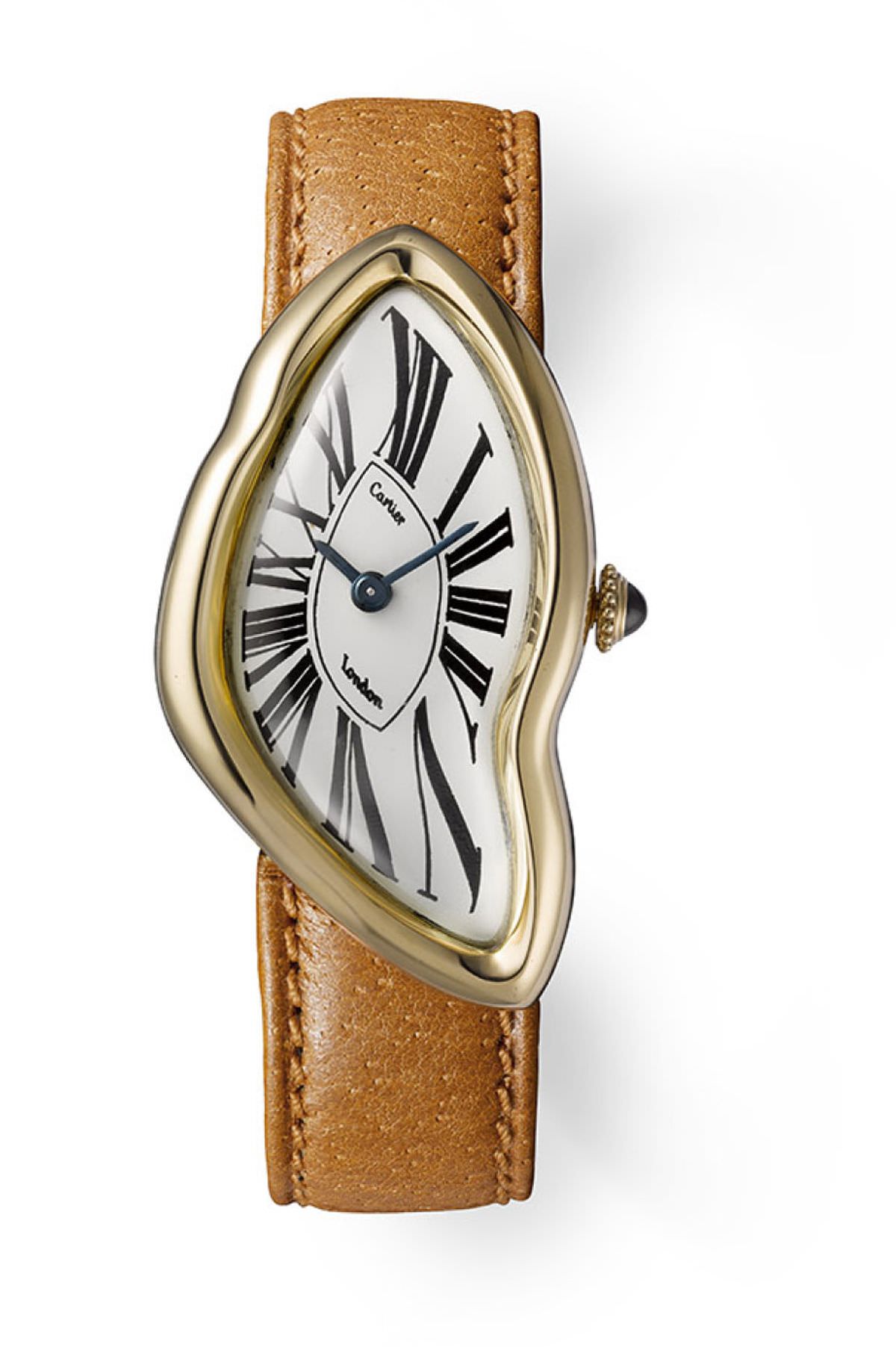 Cartier Crash
Cartier Crash And then, in the 1960s, Cartier truly broke the rules. The Crash debuted as a horological enigma: A watch that looked like it had melted. Rumours swirled that it was modelled after a timepiece damaged in a car accident—others say it was a surrealist fantasy come to life under the creative eye of Jean-Jacques Cartier. Whatever the origin, the Crash was radical, romantic, and unmistakably Cartier.
 Men's Wristwatch by Cartier London
Men's Wristwatch by Cartier London Cartier’s rebellious streak continued into the 1970s, with limited-edition watches out of its London boutique. Among them: A rare sinusoidal case and another shaped like an octagon—both rarities today, both examples of Cartier's willingness to experiment beyond commercial norms.
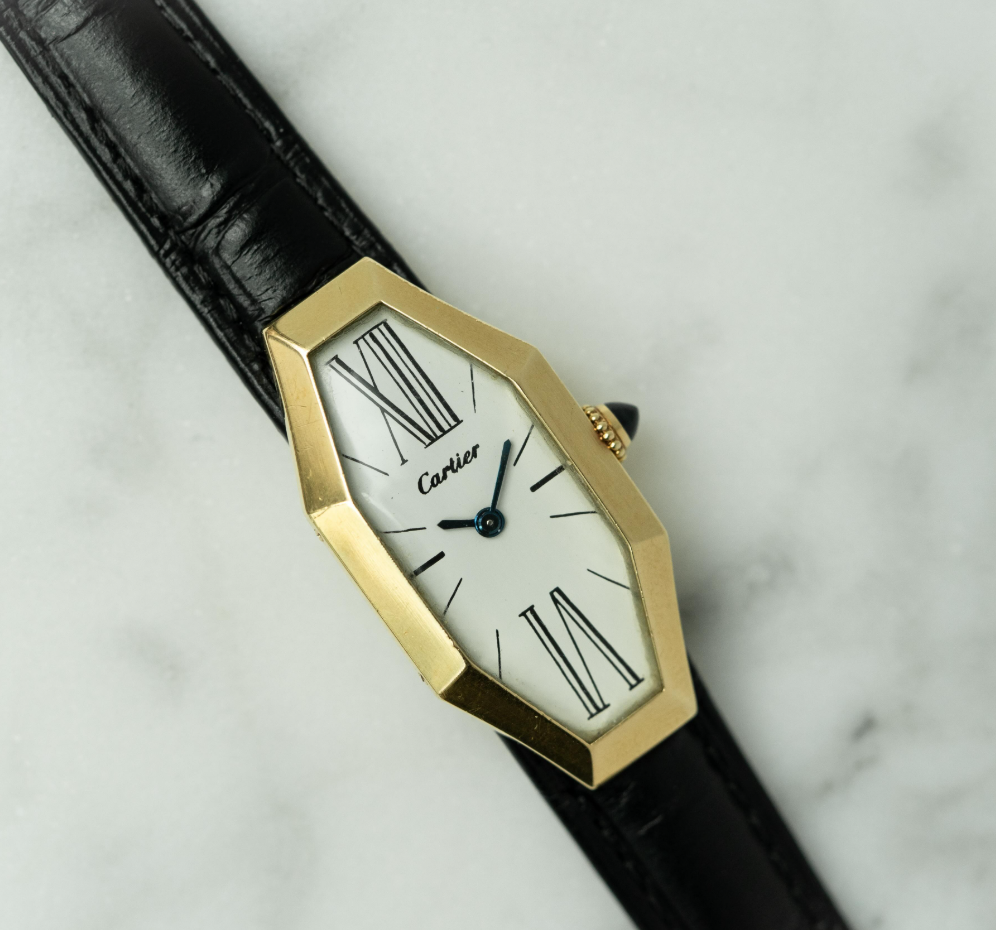 Men's wristwatch by Cartier London in an octagonal case
Men's wristwatch by Cartier London in an octagonal case Then in 1972, Cartier London created the Pebble, one of Cartier’s rarest and most collectible designs. Named for its smooth, rounded square case that resembles a pebble or a baseball diamond. Only a handful were produced in the 1970s, making originals extremely rare. However, Cartier reissued it in 2022 in a limited edition of 150 pieces of 36mm yellow gold model, powered by manual-winding caliber 430 MC.
 Cartier Pebble
Cartier Pebble
While recent decades saw Cartier dabbling in more classic aesthetics, even its round watches have a twist. Take the Ballon Bleu: launched in 2007, it may seem traditionally round at first glance, but its asymmetric bubble-like crown guard disrupts the dial’s harmony—making it uniquely Cartier.
 Cartier Ballon Bleu
Cartier Ballon Bleu
Then there are hidden gems like the Twin Strap with its elongated rectangular case in the 1960s and in 1921, the Cloche de Cartier, shaped like a small bell (or cloche). After appearing again in 2007 in yellow gold, in a limited edition of 100 watches in the Cartier Paris Collection Privé, the timepiece was revived by the brand in 2021 again. The latest models come in yellow or pink gold, or platinum, with the hand-wound 1917 MC movement, as well as three versions with a skeletonized movement.
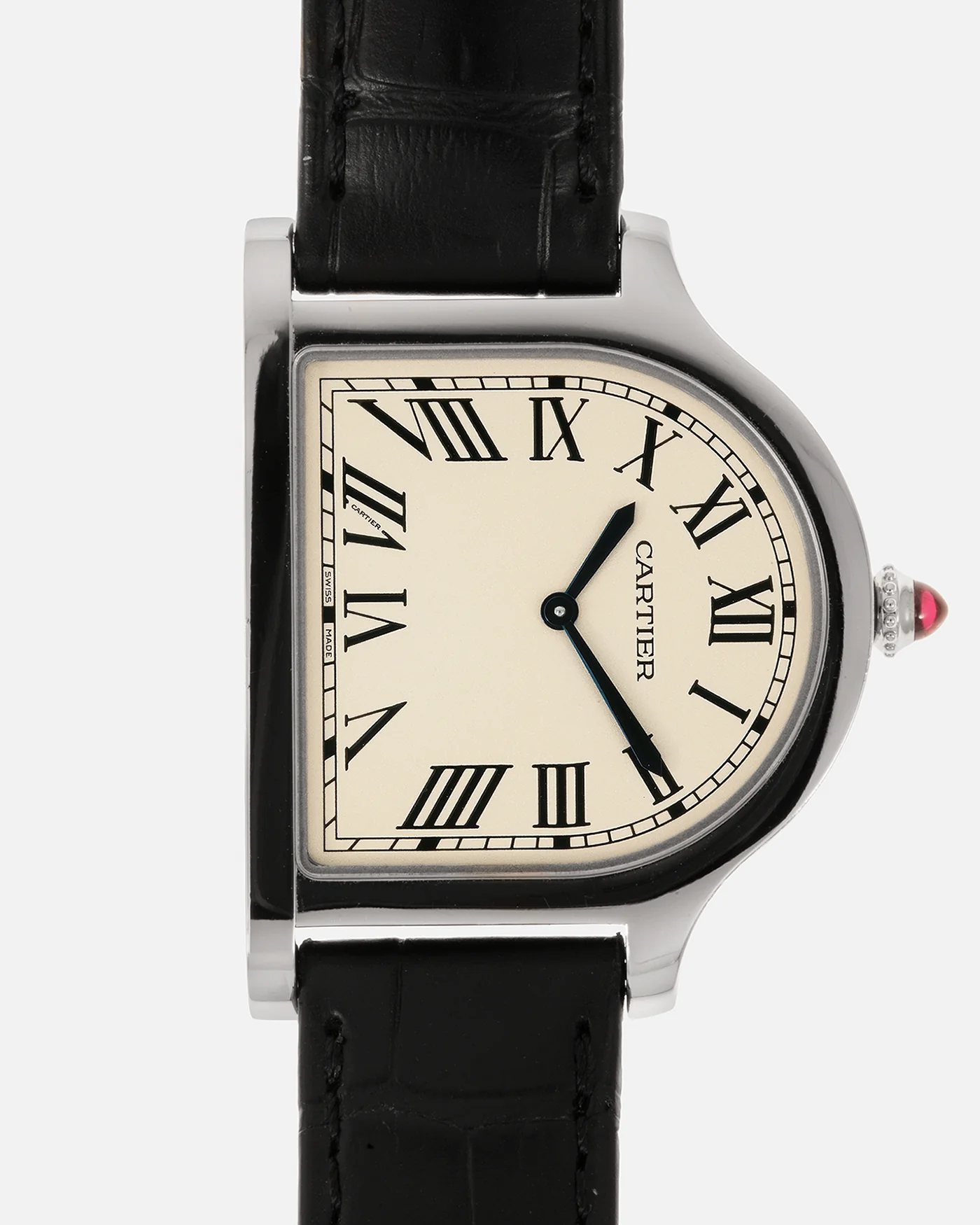 Cloche de Cartier
Cloche de Cartier
Fast forward to 2016, the Drive de Cartier was released after the success of the Calibre de Cartier. The timepiece was aimed at the modern gentleman—distinct yet classically Cartier. Inspired by vintage car aesthetics, especially the lines of classic car grilles and dashboards.
 Drive de Cartier
Drive de CartierMeasuring 39mm X 40mm, various models came in steel, rose gold, white gold with movements options as well – Caliber 1904-PS MC (automatic time & date), Caliber 1904-FU MC (automatic with dual time zone) and Caliber 9452 MC (manual, flying tourbillon – Geneva Seal).
In a world where many watchmakers seek continuity and tradition, Cartier boldly chooses reinvention. The brand’s obsession with unconventional shapes isn't merely aesthetic—it’s philosophical. It reflects a willingness to reimagine the familiar, to challenge norms, and to elevate design to the level of art.
For collectors and enthusiasts, this means one thing: when Cartier announces a new model, it’s not just a watch release. It’s a design moment—often, a revolution in shape.









